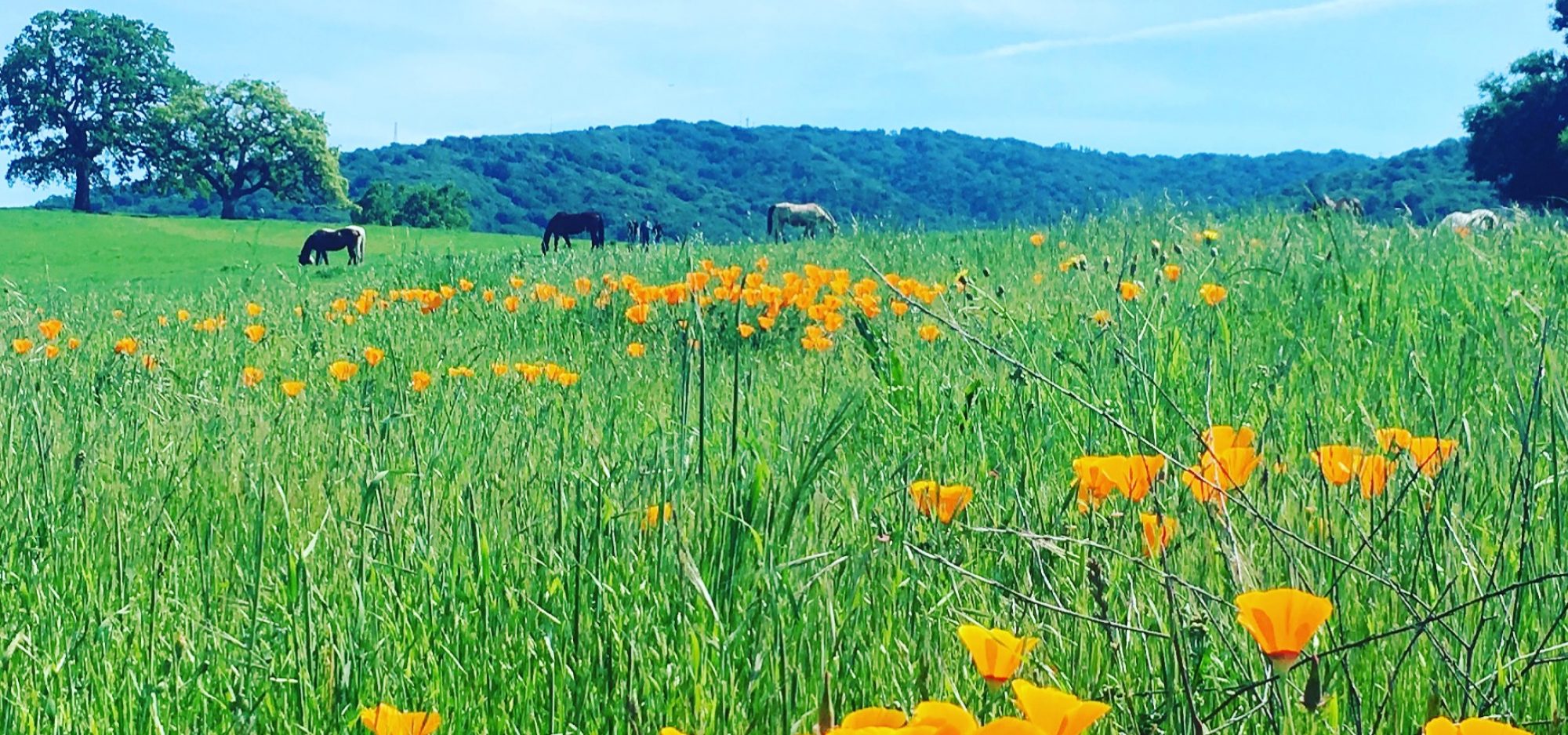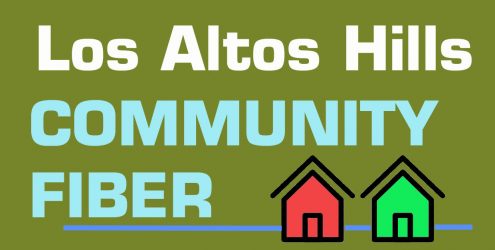As we start to grow and get more interest in our community fiber organization, we are getting some press articles.
Click on the links below to view this articles:
Channel 2 news segment – Local SF bay area news
KTVU News segment –
Article by Elissa Welle that appeared on the front page of the SJ Merc

September 2020 – Click on image to read the article
Letter from Anna Esho after reading Broadband Breakfast article

Broadband Breakfast Article – August 30th 2020

Click here for link to article
Los Altos Town Crier Article – March 18, 2020
News
Barn raiser in the Hills: Dissatisfied with Big Telecom, residents connect themselves
Five years ago, when Scott Vanderlip decided to switch internet providers from AT&T U-verse to Comcast, he figured wiring his Los Altos Hills home wouldn’t be too labor intensive considering his next-door neighbor’s existing Comcast connection. But the telecom giant quoted him $17,000 for the work.
“I’m, like, ‘But I can see it on the pole right over there,’” Vanderlip said. “They do have to add three poles worth of new cable to string it, but I’m thinking, ‘Seventeen-thousand dollars? You’ve got to be kidding. I’m not going to pay that.’ I’m only paying $70 a month for my (service).”
Frustrated with the lack of alternatives available to a town whose rural, hilly neighborhoods and low-density population give broadband providers little incentive to expand service, Vanderlip and other Hills residents have banded together to form Los Altos Hills Community Fiber, a network owned by subscribers. Supported by Sunnyvale-based internet service provider Next Level Networks, the service went live in April. Currently, only four homes along one side of Fremont Pines Lane – including two owned by Vanderlip – are connected, but there are plans to expand to the other side of the street and to homes on the Wildflower Lane cul-de-sac.
The LAH Community Fiber network offers approximately 1-gigabit speeds for both uploads and downloads now, but it’s built for 10-gigabit speed, which will become available as the cost of the requisite equipment decreases, according to David Barron, Next Level Networks COO. He refers to the network as “future proof” because residents have control over upgrades.
“They swap out the equipment in the home and they can upgrade that capacity from 10 gigabits to 20 to 100 – whatever they need, it’s relatively simple and affordable to do it, and they get to decide when,” Barron said. “They don’t have to wait for some operator to have the budget to come in and change it. The community decides.”
To hook up to Community Fiber, residents pay a one-time assessment fee between $3,000 and $10,000, with the cost dependent on factors like the neighborhood participation rate and lot size, according to Next Level Networks. The monthly service charge ranges from $60 to $140, with the cost of the network uplink and reserves for equipment and technical support decreasing as more people sign up.
In addition to the enthusiasm of Fremont Pines Lane residents like Vanderlip, Next Door Solutions selected the street as the pilot project location due to its proximity to Gardner Bullis School, which already had dark fiber – extra unused fiber-optic cable – from its own network that they could lease from the school district’s middle-mile provider. From Gardner Bullis, the circuit winds through Los Altos, Cupertino and Sunnyvale to get to Santa Clara, where it connects to the backbone of the internet.
Alternative options
Los Altos Hills Community Fiber is a potential solution for some town residents grappling with sluggish internet connections, but there are others. Through the Connect America Fund, the Federal Communications Commission is allocating billions toward providing voice and broadband service to underserved, rural areas. Areas like Los Altos Hills, however, are not home to the target demographic.
“Most of the rural communities are not as affluent as the town of Los Altos Hills, so I don’t think we’re going for funding,” said town Mayor Michelle Wu. “It will be a little bit tougher. The ideal is to encourage a private entity, like a town resident or somebody who says, ‘I will be happy to fund the broadband connectivity such as fiber throughout the town.’”
That might be possible through a company like Santa Clara-based OpenFiber. In October, CEO Phillip Clark told council members his company could facilitate infrastructure capable of delivering 10-gigabit, fiber-optic service to 3,000 or so Los Altos Hills homes for between $12 million and $18 million.
Ronald Haley, who lives on La Rena Lane, would like to see a parcel tax pay for undergrounding fiber across the entire town. He estimates it would cost $15 million based on estimates provided by independent companies interacting with the town’s since-disbanded Emerging Technology Ad Hoc Committee.
“If the town would do it, I’d love it because the town could do it all in one go, whereas the Community Fiber has to go into each community and get agreements to basically run it,” Haley said. “It’s a lot easier when you have the town’s support behind it as opposed to sort of having to fight the town.”
But until that happens, he’s ready to join LAH Community Fiber if and when it becomes available to his pocket of Los Altos Hills. Currently, he’s paying Comcast $160 a month for download speeds of approximately 275 megabits and upload speeds of approximately 10 megabits – and he owns his own modem. A friend in another part of town is paying AT&T $70 for symmetrical fiber bandwidth of 1 gigabit.
“The price depends very much on where you live and if there’s any competition or not, and the problem is, in Los Altos Hills, in most places, there’s no choice but to use Comcast,” Haley said.
Learn more about Los Altos Hills Community Fiber by visiting lahcommunityfiber.org.
Survey highlights COVID-era internet woes, offers nonprofit’s solution

While the COVID-19 crisis has wreaked havoc on health care and the economy, some of its less dire effects have proven a catalyst for Los Altos Hills Community Fiber, a mutual benefit corporation aiming to bring high-speed internet to underserved parts of the town and neighboring communities.
“Not that I would rather have it this way, but we’ve gotten a lot more interest and there’s a lot of people,” said Scott Vanderlip, a Los Altos Hills resident and chairman of the nonprofit. “They have basically said, ‘My internet worked before. Now it doesn’t.’ They’re going crazy because it went from working to literally not working.”
Blame bandwidth sucks like video teleconferencing and 4K video streaming, much more frequent pastimes now that shelter-in-place directives have forced so many people to work, school and entertain themselves from home. Amid the lingering frustration, Community Fiber launched a survey last week to glean information about local residents’ most-pressing internet gripes. As of Friday, 41 people had responded.
Although 30 survey respondents (73.2%) indicated wired, broadband service is “super important” to them, 18 (43.9%) said their level of service has dropped significantly since the
COVID-19 outbreak. Twenty-three respondents (56.1%) use Comcast as their primary provider. AT&T is the second-most popular provider, used by six respondents (14.6%). When asked whether they are interested in joining Community Fiber, 30 people (75%) indicated they are, with 11 (27.5%) among them expressing willingness to become “champions” to inform their neighbors of the possibility.
Sharing the cost
Vanderlip and other Hills residents formed Community Fiber last year as a solution to their own struggles trying to convince telecom giants like Comcast and AT&T to expand and improve service despite the town’s low population density and hilly terrain, both of which provide them with little incentive to do so. Comcast quoted Vanderlip $17,000 to connect his own home five years ago.
Service availability is “literally house-to-house,” he said. “One house may have it and the next house doesn’t, and then they have these astronomical install fees.”
Through its contract internet provider Next Level Networks of Sunnyvale, Community Fiber aims to offer 10-gigabit upload and download speeds for a fraction of what AT&T and Comcast charge by dividing the cost of installing fiber infrastructure among subscribers; the more subscribers who sign up, the less installation costs each one. If, for example, Next Level Networks determines installation for a particular Los Altos Hills street will run $50,000 and five residents there are interested in participating, each would pay $10,000. Later, if their neighbors join, each neighbor’s contribution would help reimburse the early adopters. Everyone pays a monthly membership fee between $60 and $140.
“The cost of doing this will be distributed over years, but increasing the number of people who want to participate, it will essentially rebate the people who came first,” said Dr. Gautam Agrawal of the Olive Tree Lane neighborhood.
As a Comcast business-class customer with a backup AT&T DSL line, Agrawal doesn’t experience the latency issues many of his neighbors do, but he’s excited about Community Fiber’s promise of faster speeds at less cost and has become a champion for the initiative. His home, located 900 feet up a hill, provides him with enough line of sight to facilitate a wireless connection from his roof to Next Level Networks. He could then provide a wired fiber connection to his neighbors.
Similar setups are possible for other neighborhoods too, Agrawal said.
“It can be done very inexpensively if we want to, as long as we as a community or a group or a sub-group decide, hey, let’s share our resources, share our expertise and share our knowledge and get it done,” he said. “We don’t have to rely on a third party to do it, and we can provide it faster, better and cheaper than what that third-party could do. That’s the goal.”
While not everyone who has taken Community Fiber’s survey so far agrees 10-gigabit speeds are crucial for remote work, many admit more bandwidth would certainly make some tasks more manageable.
“With my current internet, I can’t reliably do a zoom conf. call,” one respondent wrote. “It’s pretty embarrassing considering we’re in the center of Silicon Valley and can’t get a decent internet connection.”
Another respondent imagined increased bandwidth might improve their personal life.
“My son and daughter would probably visit me more often,” the respondent wrote.
To take the survey and for more information on Los Altos Hills Community Fiber, visit lahcommunityfiber.org.





